Papaver Semen, Poppy seedKhas Khas (Ayurveda)Kacakaca (Siddha) Tukhm-e-khashkash (Unani) Ying Zi Su Mi (TCM) |
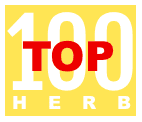
|
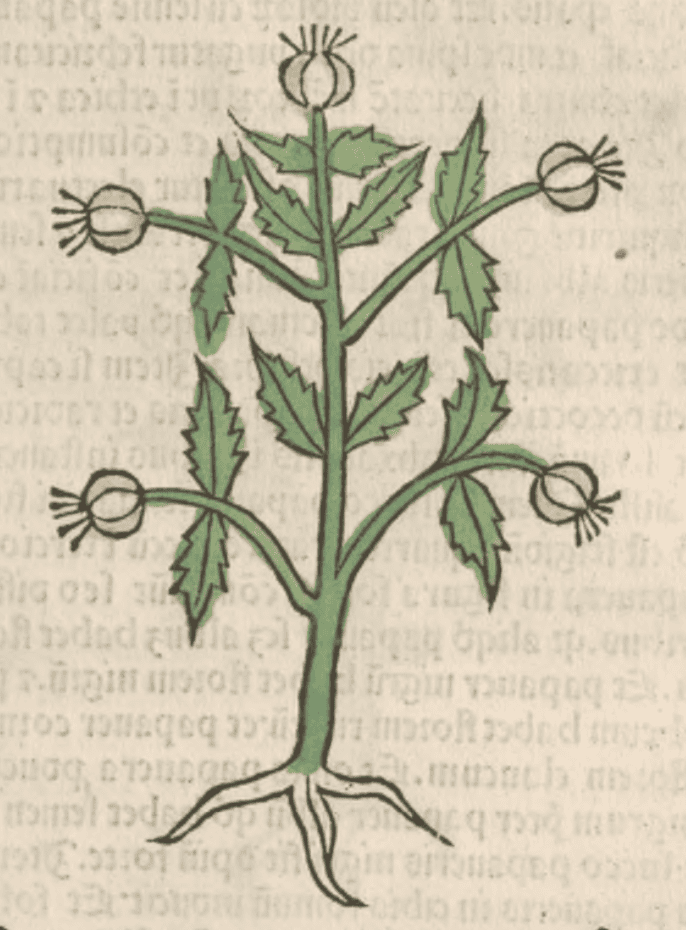 Herbarius latinus, Petri, 1485
Herbarius latinus, Petri, 1485 |
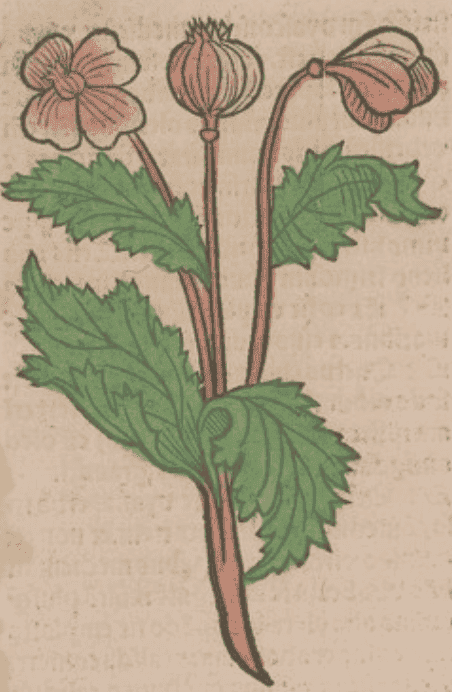 Ortus Sanitatis, Meydenbach, 1491
Ortus Sanitatis, Meydenbach, 1491 |
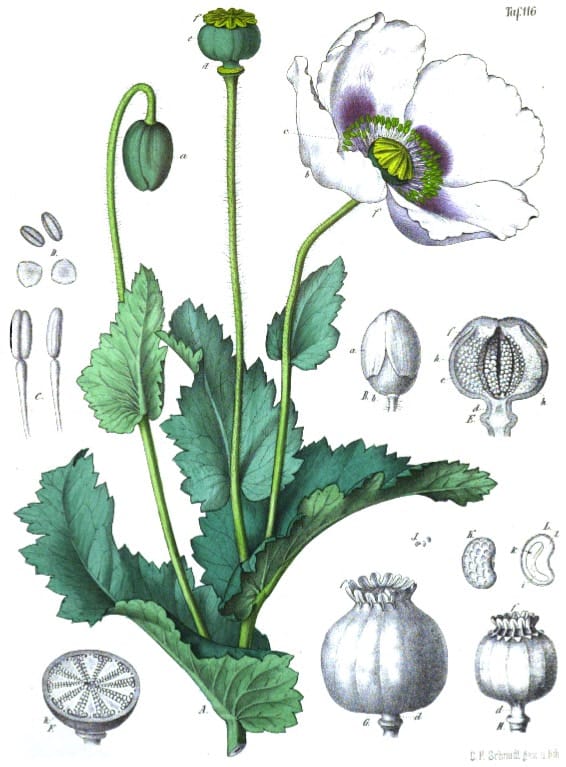 Atlas der officinellen pflanzen, Felix, 1899
Atlas der officinellen pflanzen, Felix, 1899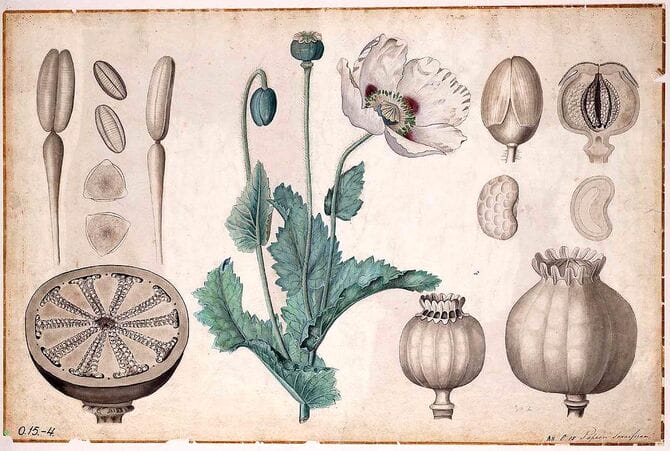 Botanische wandplaten, 1904–1914
Botanische wandplaten, 1904–1914Botanical name:
Papaver spp.
P. somniferum is the Opium Poppy
Parts used:
Seed
“The best and safest kind of Poppy is the White Poppy”. (Avicenna)
Temperature & Taste:
Cool, dry; Sweet, Bitter
“The Garden Poppy is Cold and Dry in the Second degree. The Black Poppy is Cold and Dry in the Third degree”. (Avicenna)
Classifications:
2O. ASTRINGENT
3B. FEBRIFUGE & ANTIPYRETIC. 3J. INCREASE SEMEN. 3K. EXPECTORANT. 3L. ANTI-TUSSIVE. 3M. ARTHRITIC
4a. CEPHALIC. 4c. CARDIAC. 4d. PECTORAL. 4h. NEPHRITIC. 4j. NERVINE
Constituents
Per gram: 58–62 micrograms of morphine (free and bound); 28–54 micrograms of codeine (free and bound)
Uses:
1. Clears Wind-Heat, Stops Cough:
-Heat-type and Spasmodic Coughs
-Hoarseness, acute Sore Throat
-Bronchitis, Pleurisy, Consumption
-Catarrh, Sinusitis, Hayfever, Sneezing
-not as strong as the capsule, but more tonifying
-“Poppy seeds are useful in Hot Cough, chest Congestion and Hemoptysis … All the seeds of poppy are expectorant”. (Avicenna)
2. Calms the Mind, Promotes Rest, Eases Pain:
-used as the Herb, but not as strong
-Headache, Migraine
-“Poppy seeds are somniferous and anaesthetic specially the Black Poppy. It induces sleep even when used as a suppository”. (Avicenna)
-“applied as a plaster on the forehead of patients of insomnia”. (Avicenna)
3. Clears Damp-Heat:
-Burning Urine, Gonorrhea, Strangury
-‘stops diarrhea and dysentery’ (Li Shi Zhen)
-Kidney Ulcers
-“Poppy seeds are useful in congestion of fluids in the Stomach”. (Avicenna)
-also for side effects of taking Mineral drugs (Kai Bao Ben Cao)
4. Astringes the Essence:
-Poppy seed was regarded as a tonic; used for wasting and weakness
-Spermatorrhea, Premature Ejaculation
-“The seeds of Garden Poppy, if taken with honey, promote Semen production”. (Avicenna)
Dose:
1. Doses should be less for Children, if used.
Powder: 1–4 grams
Decoction: 2–6 grams
An Infusion of 1–2 teaspoonfuls in a cup of boiling water can be taken once or twice daily.
Comment:
As a medicine to reduce pain, calm the mind and nerves, in descending order of strength are: Opium, dried Capsules, dried Leaf, Seed
Correctives:
1. Sugar, Honey
2. Plantain seed
3. Mastic
4. Tragacanth
Substitutes:
1. Mastic
2. Sweet Almond
3. Dill seed
4. Hemp seed
5. Lettuce seed
Preparation
Washed Poppy Seed
Water washing has been shown to be effective in reducing alkaloid content by 50–80%. This can be achieved by covering the seeds with hot water then rinsing. The seeds can then be steeped in hot water to make an infusion. They can also be dried for later use.
Washed Poppy seed is better for use in Children.
Main Combinations:
1. Cough:
i. Poppy seed with Maidenhair, Jujubes, Lettuce seed, Licorice (as in Syrup of Poppy of Mesue)
ii. Poppy seed with Almonds, Pine nut, Tragacanth, Licorice (as in Lohoch of Poppy)
iii. Poppy seed with 4 Cold seeds, Marshmallow, Tragacanth, Licorice, Amber (as in Haly’s Powder)
iv. Poppy seed with Gum Arabic, Tragacanth, Starch, Marshmallow seed, Mallow seed, Four Cold seeds, Licorice, Amber (Memorial Pharmaceutique, 1824)
v. obstinate Cough, take White Poppy seed with Syrup of Violets, Conserve of Roses (Formulaire de Montpellier, 1822)
vi. dry Cough, Poppy seed with Tragacanth, Gum Arabic, Gourd seed, Quince seed (as in Powder for Dry Cough)
2. Pleurisy:
i. dried Poppy heads with seeds, Marshmallow root, Linseed, Fenugreek, Cumin, Bay Berry, Mallow, Motherwort, Camomile (Dispensatorium medico pharmaceuticum Palatinatus, 1764)
3. Consumption, Poppy seed with Date, Raisin, Licorice, Jujubes, Coltsfoot and the Four Cold Seeds (as in Syrup Against Consumption)
4. Spitting Blood, Poppy seed with Henbane seed, Sealed Earth, Hematite and Sugar of Rose (as in Powder for Spitting Blood)
5. Nourish the Yin:
i. Poppy seed with Pearl, the 4 Cold seeds, Rose, Sandalwood, Aloeswood, Red Coral (as in Cooling Pearl Powder)
ii. Poppy seed with Tragacanth, Gum Arabic, 4 Cold Seeds, Licorice (as in Tragacanth Cooling Powder)
6. To promote Sleep:
i. Poppy seed with Purslane seed (as in Powder to Promote Sleep)
ii. Poppy seed with Camomile, Violet flower
iii. Poppy seed with Lettuce seed, Purslane seed, Gourd seed, Watermelon seed, Licorice juice, Tragacanth (as in Expert Troches of Mahomet)
7. To ease pain:
i. in children, make an infusion of Camomile or Violet with Poppy seed
ii. Poppy seed, Henbane seed, Violet
8. Burning Urine, Poppy seed with the 4 Cold Seeds (as in Powder for Burning Urine)
9. Ulcers or Abscesses of the Urinary system, Poppy seed with Winter Cherry, Almond, Pine nut, Cucumber seed, Melon seed, Purslane seed, Gum Arabic, Dragons Blood (as in Troches of Winter Cherry)
10. Premature Ejaculation, Unripe Rue, Toasted Rue, Poppy seed, Sesame seed (as in Pills of Hindi Mumsik of Unani)
11. Adverse effects of taking mineral drugs, grind the seeds and stew in water, then add Honey. (Ben Cao Gang Mu)
Major Formulas:
Electuary of Poppy (Diapapaver) (Mesue)
Lohoch of Poppy (Lohoc de Papavere)
Troches of Poppy seed (Mesue)
Troches of Poppy seed (Unani)
Troches of Poppy of Zacharia Arasi
Troches of Judaeus for Wakefulness
Troches of Winter Cherry
Cooling Pearl Powder
Pills for Premature Ejaculation (Unani)
Bolus of Seeds (Unani)
Tragacanth Cooling Powder
Electuary for Liver Heat (Unani)
Letificans Temperate Electuary
Medicine to Defend the Base from all Danger
Cautions:
1. Avoid overdose or long-term use.
2. Allergic reactions have been reported.
Comment:
In recent years, a number of hospitalisations have been associated with the use of Poppy seed tea. This involves large doses of brewed Poppy seed for recreational use, and sometimes as a self-administered way of dealing with opiate withdrawal syndrome or chronic pain. Poppy seed tea can contain enough morphine to be potentially lethal if taken in large enough doses. However, the use of Poppy seed in traditional formulas is far below the doses required for toxicity and poses no threat.
Toxicity
–Acute cardiotoxicity following ‘poppy seed tea’ consumption.
Main Preparations used:
Expressed Oil of the Seed
|
‘The medicinal properties of the milky juice of the poppy have been known from a remote period. Theophrastus who lived in the beginning of the 3rd century B.C. was acquainted with the substance in question… The investigations of Unger (1857,) have failed to trace any acquaintance of ancient Egypt with opium. Scribonius Largus in his Compositiones Medicamentorum (circa A.D. 40) notices the method of procuring opium, and points out that the true drug is derived from the capsules, and not from the foliage of the plant. About the year 77 of the same century, Dioscorides plainly distinguished the juice of the capsules under the name of [?] from an extract of the entire plant, [?], which he regarded as much less active. He described exactly how the capsules should be incised, the performing of which operation he designated by the verb [?]. We may infer from these statements of Dioscorides that the collection of opium was at that early period a branch of industry in Asia Minor. The same authority alludes to the adulteration of the drug with the milky juices of Glaucium and Lactuca, and with gum. Pliny devotes some space to an account of Opion, of which he describes the medicinal use. The drug is repeatedly mentioned as Lacrima papaveris by Celsus in the 1st century, and more or less particularly by numerous later Latin authors. During the classical period of the Roman Empire as well as in the early middle ages, the only sort of opium known was that of Asia Minor. The use of the drug was transmitted by the Arabs to the nations of the East, and in the first instance to the Persians. From the Greek word [?], juice, was formed the Arabic word Afyun, which has found its way into many Asiatic languages. The introduction of opium into India seems to have been connected with the spread of Islamism, and may have been favoured by the Mahommedan prohibition of wine. The earliest mention of it as a production of that country occurs in the travels of Barbosa who visited Calicut oh the Malabar coast in 1511. Among the more valuable drugs the prices of which he quotes, opium occupies a prominent place. It was either imported from Aden or Cambay, that from the latter place being the cheaper, yet worth three or four times as much as camphor or benzoin. Pyres in his letter about Indian drugs to Manuel, king of Portugal, written from Cochin in 1516, speaks of the opium of Egypt, that of Cambay and of the kingdom of Cous (Kus Bahar, S.W. of Bhotan) in Bengal. He adds that it is a great article of merchandize in these parts and fetches a good price;— that the kings and lords eat of it, and even the common people, though not so much because it costs dear. Garcia d’Orta informs us that the opium of Cambay in the middle of the 16th century was chiefly collected in Malwa, and that it is soft and yellowish. That from Aden and other places near the Erythrean Sea is black and hard. A superior kind was imported from Cairo, agreeing as Garcia supposed with the opium of the ancient Thebaid, a district of Upper Egypt near the modern Karnak and Luksor. In India the Mogul Government uniformly sold the opium monopoly, and the East India Company followed their example, reserving to itself the sole right of cultivating the poppy and selling the opium. Opium thebaicun was mentioned by Simon Januensis, |
physician to Pope Nicolas IV. (A.D. 1288-92), who also alludes to meconium as the dried juice of the pounded capsules and leaves. Prosper Alpinus, who visited Egypt in 1580-83, states that opium or meconium was in his time prepared in the Thebaid from the expressed juice of poppy heads. The German traveller Kampfer, who visited Persia in 1685, describes the various kinds of opium prepared in that country. The best sorts were flavoured with nutmeg, cardamom, cinnamon and mace, or simply with saffron and ambergris. Such compositions were called Theriaka, and were held in great estimation during the middle ages, and probably supplied to a large extent the place of pure opium. It was not uncommon for the sultans of Egypt of the 15th century to send presents of Theriaka to the doges of Venice and the sovereigns of Cyprus. In Europe opium seems in later times not to have been reckoned among the more costly drugs; in the 16th century we find it quoted at the same price as benzoin, and much cheaper than camphor, rhubarb, or manna. With regard to China it is supposed that opium was first brought thither by the Arabians, who are known to have traded with the southern ports of the empire as early as the 9th century. More recently, at least until the 18th century, the Chinese imported the drug in their junks as a return cargo from India. At this period it was used almost exclusively as a remedy for dysentery, and the whole quantity imported was very small. It was not until 1767 that the importation reached 1,000 chests, at which rate it continued for some years, most of the trade being in the hands of the Portuguese. The East India Company made a small adventure in 1773 ; and seven years later an opium depot of two small vessels was established by the English in Lark’s Bay, south of Macao. The Chinese authorities began to complain of these two ships in 1793, but the traffic still increased, and without serious interruption until 1820, when an edict was issued forbidding any vessel having opium on board to enter the Canton river. This led to a system of contraband trade with the connivance of the Chinese officials, which towards the expiration of the East India Company’s charter in 1834 had assumed a regular character. The political difficulties between England and China that ensued shortly after this event, and the so-called Opium War, culminated in the Treaty of Nanking (1842), by which five ports of China were opened to foreign trade, and opium was in 1858 admitted as a legal article of commerce. The vice of opium-smoking began to prevail in China in the second half of the 17th century, and in another hundred years had spread like a plague over the gigantic empire. The first edict against the practice was issued in 1796, since which there have been innumerable enactments and memorials,’ but all powerless to arrest the evil which is still increasing in an alarming ratio. Mr. Hughes, Commissioner of Customs at Amoy, thus wrote on this subject in his official Trade Report for the year 1870:— “Opium-smoking appears here as else where in China to be becoming yearly a more recognized habit,— almost a necessity of the people. Those who use the drug now do so openly, and native public opinion attaches no odium to its use, so long as it is not carried to excess. … In the city of Amoy, and in adjacent cities and towns, the proportion of opium-smokers is estimated to be from 15 to 20 per cent, of the adult population. … In the country the proportion is stated to be from 5 to 10 per cent.. .’ (Pharmacographia, Fluckiger & Hanbury, 1879) |
–Poppy Seed Tea: A Short Review and Case Study
ALKALOID CONTENT
–Update of the Scientific Opinion on opium alkaloids in poppy seeds
–Concentrations of Morphine and Codeine in Paired Oral Fluid and Urine Specimens Following Ingestion of a Poppy Seed Roll and Raw Poppy Seeds
–Poppy Seed Tea: A Short Review and Case Study
–Opium Alkaloids in Harvested and Thermally Processed Poppy Seeds
–Morphine and Codeine Concentrations in Human Urine following Controlled Poppy Seeds Administration of Known Opiate Content
–Determination of morphine, codeine, and thebaine concentrations from poppy seed tea using magnetic carbon nanotubes facilitated dispersive micro-solid phase extraction and GC-MS analysis.
EFFECT OF TREATMENT ON ALKALOID CONTENT
–Assessment of Dry Heating, Water Rinsing, and Baking on Concentrations of the Opium Alkaloid Noscapine in Poppy Seeds.
–Concentrations of the Opium Alkaloids Morphine, Codeine, and Thebaine in Poppy Seeds are Reduced after Thermal and Washing Treatments but are Not Affected when Incorporated in a Model Baked Product.
ANTIOXIDANT
–Antioxidant Potential of the Extracts, Fractions and Oils Derived from Oilseeds
LIPID METABOLISM
–Comparative Effects of Dietary Hemp and Poppy Seed Oil on Lipid Metabolism and the Antioxidant Status in Lean and Obese Zucker Rats
SLEEP PRODUCING
–Poppies as a sleep aid for infants: The “Hypnos” remedy of Cretan folk medicine
